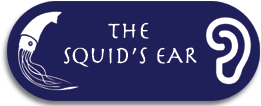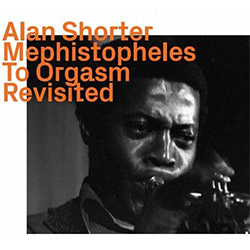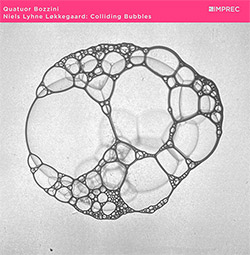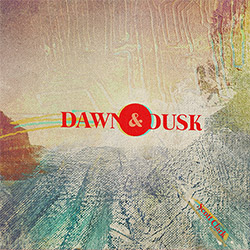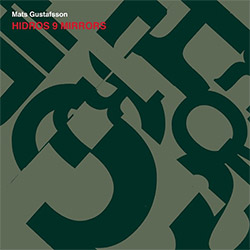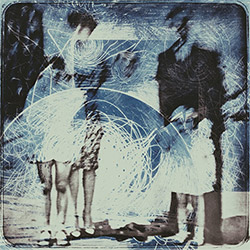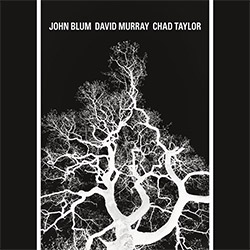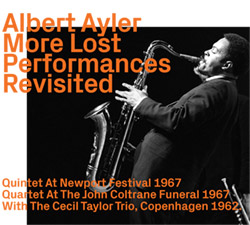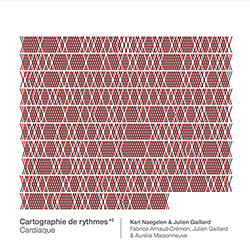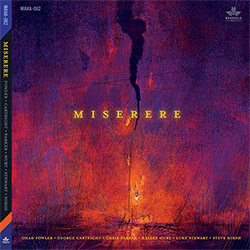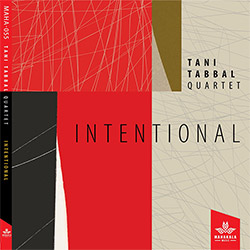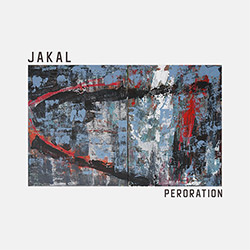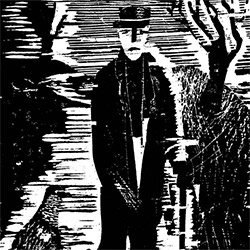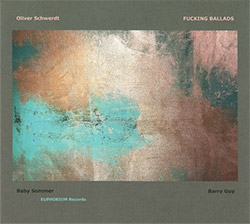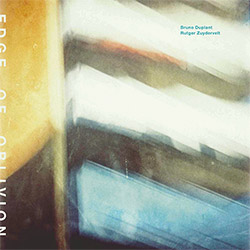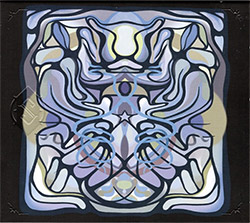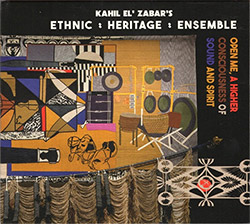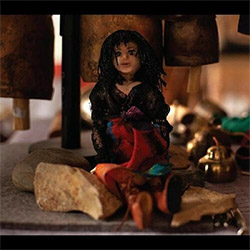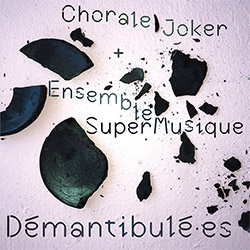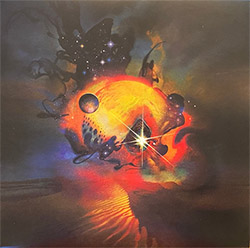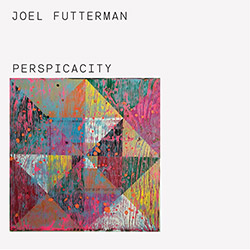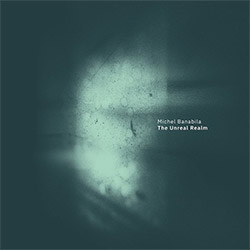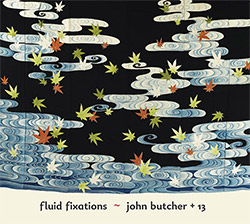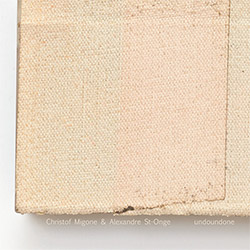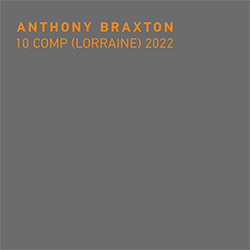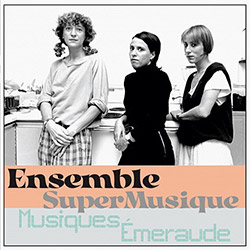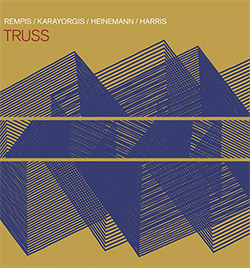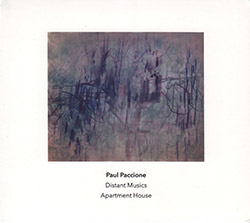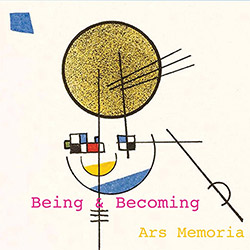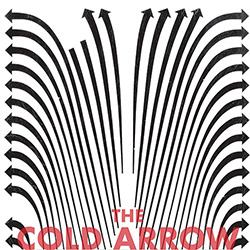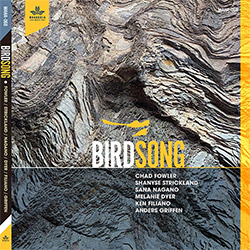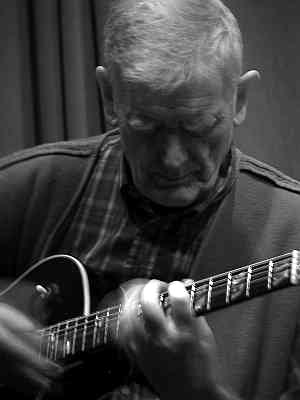The Clarinet (& Chi)
By Perry Robinson 2002-12-11 15:30:26

| | Perry Robinson [Photo by Peter Gannushkin] |
The clarinet is a very interesting instrument. Whereas the sax starts thin at the neck and gets broader at the bell, the clarinet is straight, and that makes a big difference between the clarinet and the sax's sound. Of all the instruments, the clarinet has the biggest difference between the lowest and highest sound, and that's what makes it unique. The clarinet has such a broad range that sometimes you need two mics to get a good recording, one to get the low register and another to get the high. It's also harder to play than the sax because on the sax if you want to play the same note an octave higher you just press an octave key with your thumb, but to go an octave higher on the clarinet you have to completely change your fingering. So that's probably one of the reasons the clarinet has a reputation for being difficult to learn.
Your sound definitely comes from your personality, and it's also the shape of your body, your embouchure and your breathing. Style is a fascinating thing to analyze. Two people can play the same instrument and get a totally different sound, like Coltrane and Sonny Rollins both playing tenor sax. Playing clarinet is a process of finding what's right for you in terms of your breathing, reeds and mouthpiece, but I would say that it's mostly breathing. All playing and singing comes from the diaphragm, which is the seat of life, of chi. Tony Scott's stomach was huge; it was full of chi, which is the main reason he got that huge sound. We should all develop our diaphragms, and we should all breathe from there. It's something that I worked on, and now I breathe that way almost without thinking. I don't do circular breathing when I play; I don't think I need it with my style of playing. It's good for certain things, like playing long lines without stopping, but I just take a deep breath for whatever I'm doing. Breathing deeply like that is good because you develop your lungs.
Mouth and throat techniques are also important. As I've discussed, I play using the double embouchure, which isn't done so often in jazz. You can also roll your 'R's while you play, which creates a certain sound. It's like a guttural 'R' sound but not quite, it's more a 'th' sound. If you want a raspy sound you make a rasping 'Rrrrr' in your throat. The old players like Pee Wee Russell did a lot of that. The early vocabulary of jazz is very rich and emotional, it's full of people talking and yelling. If you think how people talk when they say something like, 'Yeah, I'm gonna get you,' it's that same kind of guttural voice. And there's a whole technique where you sing through your throat at the same time as playing. You sing a melody with yourself, which creates a double voice; many horn players have developed this to a high degree. There's also ways to create an overtone, which is another way of getting two sounds at once. It only works with the lowest fingering, but if you tighten your embouchure in a certain way you can do it.
Mouthpieces are important as well. Some horn players get obsessed, and they go through thousands of mouthpieces searching for the perfect one; it's like trying to find the holy grail of mouthpieces, or like looking for that perfect person. I didn't go that far, although I tried a lot of different products. In the old days instrument stores had boxes of old mouthpieces; you'd search through a box and find one you liked. Some didn't even have a brand on them, but they were cheap and you could find a good mouthpiece that way. I also tried a glass mouthpiece. Part of Tony Scott's early sound came from using a glass mouthpiece; it gives a different sound, and the feeling of glass is a whole other experience. Over the years I've gone through many mouthpieces. You find one you like, but then they break or you lose them or something else happens. Once in the mid-1990s at a place in New Jersey called Nature's Friends Farm somebody accidentally knocked my horn over and danced on it, and they split my mouthpiece. After that I got the one I use now, which is an old one I found at a store.
Reeds are also a big concern with horn players. Reeds are from cane, then they're machined so they're soft or hard. They're numbered one and up, with one being the softest. A student who's just starting plays 11/2, then as you get stronger you move up. Guys like Tony and Buddy would use 5 or 6, and that was part of their sound. Reeds are tricky; in a box of twenty-five you might find only three good ones. You fix them by sanding or molding, but that's an art in itself which I never got into. One trick I learned was that you can break in a reed by soaking it in milk, and I've told people that over the years. There are also reeds made out of synthetic materials, and lately I've been using a clear plastic one that I like a lot. The plastic ones come in soft, medium and hard, and I use the soft.
Then there's different combinations of reeds and mouthpieces. You can experiment using a hard reed with a closed mouthpiece or a soft reed with an open one. Coltrane was a great experimenter this way; he tried all kinds of combinations. In general I'd say that the harder the reed the more pressure it takes, so then you have to have a mouthpiece to compensate. There's lots of ways you can do it; you just try everything you can to get the right combination of sounds.
It's also important to find a repairman you trust. An instrument is like a person, and your repairman is like your doctor. Instruments are so delicate and technical; there's all these little springs and levers and tiny parts, and a good repairman really has to know what he's doing. I use Alex Kolpakchi, a wonderful guy who has a store at 701 7th Avenue in New York. He's a clarinet and sax player from Russia who came to America and got work as a repairman. I used to take my horn to another store on 48th Street, but I liked talking to Alex and started using him forrepairs. I bring my horns in for an overhaul or to fix something, and he sees other little technical problems that I didn't even notice. He's very good.
Alex also sells horns, and I got all my horns through him except my little one. All of my instruments are old. I always look for vintage horns because there are certain models that aren't made any more, and they made them so great in those days. A horn from the 1930s is just as good as one from today because the basics are the same, plus the old ones have a different quality that I prefer.
I have four horns: three B-flats and one E-flat. I have a beautiful old wooden horn from the 1950s, a Selmer Centertone. The funny thing about wood clarinets is that black is not the real color; it's really an uneven brown-white, the black is just a dye that became the standard color. Wood has a great sound, but the problem with wood is that if it gets wet it cracks. If a saxophone gets wet it's not that bad, but if a wood clarinet gets wet or too cold it cracks. That's why you see musicians cleaning their instruments all the time; you have to clean after you play because if the instrument stays wet and you go into another temperature the wood will crack. But cracks can be fixed. In the old days it was like surgery on a person, but now they have a very sophisticated method and it works well.
I also have a plastic clarinet, an Evette, which is the student model of Buffet. Every major instrument company has student models, and they're less expensive because they're plastic. There's a special soul feeling with wood, no doubt about it, but you really can't tell the difference between wood and plastic, and that's because companies like Buffet and Selmer use the same shape and mechanism in their plastic student models as their wooden models. My plastic clarinet is my all-purpose one; no one believes it, but I used it when I recorded Call to the Stars. It's the exact kind kids use in school marching bands, and I can take it out in any weather.
My silver clarinet is the one I use most professionally. In the early 1990s I saw it on a stand in Alex's store and I said, 'What the hell is that? That's out.' I tried it out, and I loved it. It's unique because the metal covers wood, which creates a special alchemy. People say it has a larger sound, a heavier sound like a soprano saxophone. There are very few of these in the world; it's a Selmer, but it must have been an experiment because nobody has ever seen one like it. We can't even find out what year it was made because the serial and model number are covered with metal. We know it's very old, though, because it's cracked and worn. I always take my silver clarinet on tour with me, and I always use it at recording sessions. People know about it; it's a signature thing. My other clarinets are beautiful too, and they're equally good in their way, but this one is unique.
There's a funny story about that clarinet. I had a benefit at the Hoboken High School with Gary Schneider and Gene Turonis, and I wanted to use it. Alex had fixed it, but the middle part was loose and it needed just that slight adjustment. He didn't think I should use it, but it was new and I really wanted to so he said, 'Okay, just be aware of the loose part.' Then right before I was about to go on the whole bottom of my clarinet fell, and I lost one of the five joints. When those things happen you go, 'Oy! Oy gevalt!' I put the bottom back on, and luckily it was okay for the rest of the night.
Those are my three instruments of the soprano clarinet family. Then I have the E-flatsopranino that I got from Eckhard Kolterman. It's a Noblet, which is a subsidiary of LeBlanc. I love it; it's a mini-replica, a one-piece teeny-weeny. It's much more expensive than the others because the work is so delicate, and because it's a different size it has its own special sound. I use it for specific gigs, like when I playwith Dave, Perry, and Rande.
I have other instruments as well. I collect them because I like to have different little instruments around the house. I have a whole collection of flutes, both wood and plastic. My favorites are a wooden flute that my dad and mom brought me from Czechoslovakia, and a wooden Hawaiian flute called the Xaphoon. I had seen the Xaphoon advertised in Down Beat; it's known as the bamboo saxophone because although it's a flute it has a mouthpiece like a sax. The sound is so out; I use it with the group Cosmosis on some of our out music. I also have a few ocarinas, which are little clay instruments with four or so holes. You can hear me playing an ocarina on 'Wahaila' on Angelology. I get them from an arts and crafts stand in Pike's Market in Seattle. Most of them come with a booklet that explains the fingering you're supposed to use, but I always throw those booklets out. That kind of fingering is good if you want to play 'Yankee Doodle' or 'Mary Had a Little Lamb,' but it's more interesting to fool with the instruments, to make up your own fingerings and get sounds that way. You learn by playing, it's a Zen thing; you try everything, you go crazy and flip out and make all kinds of sounds.
reprinted from The Traveler by Perry Robinson and Florence Wetzel available at Squidco
|
